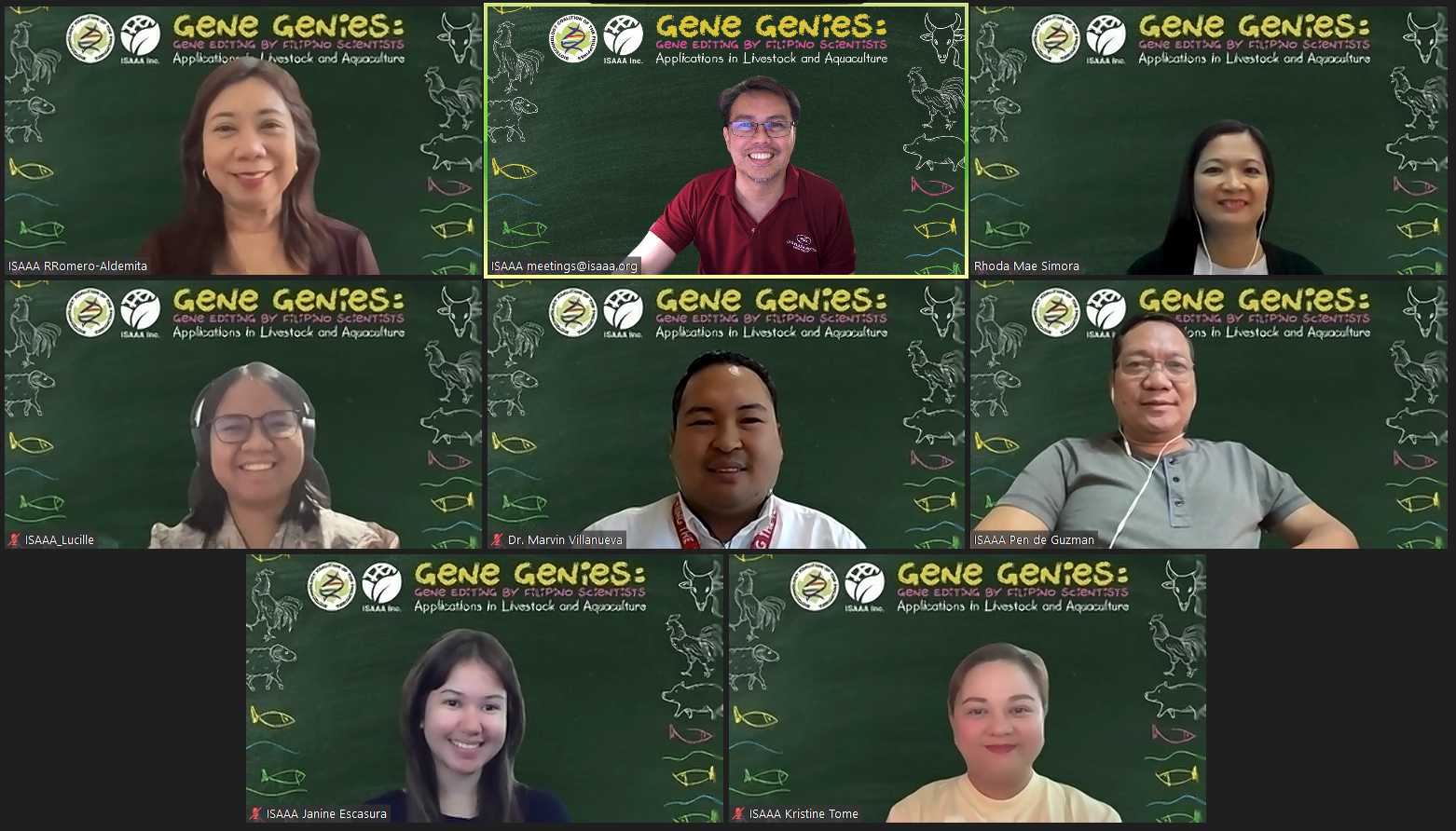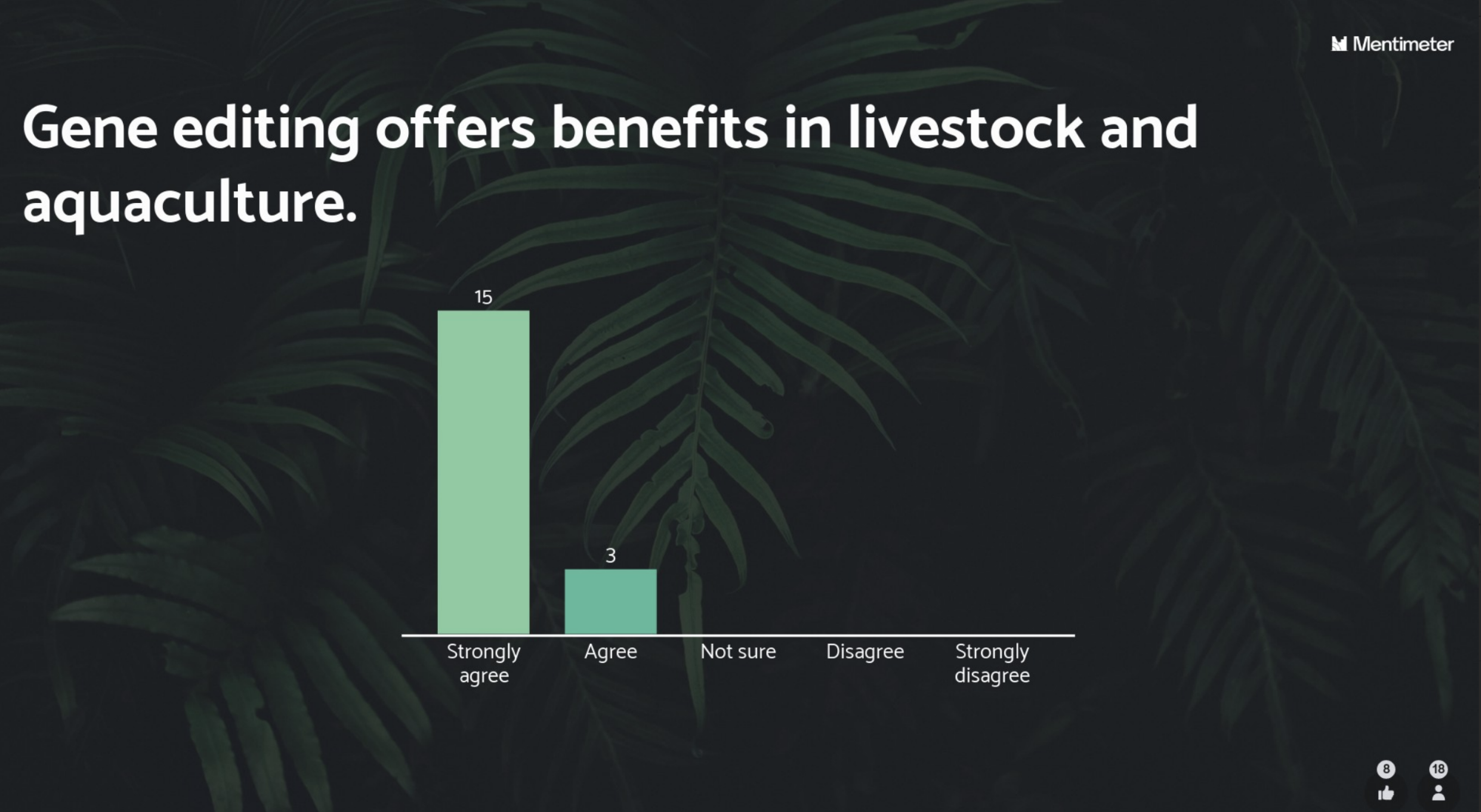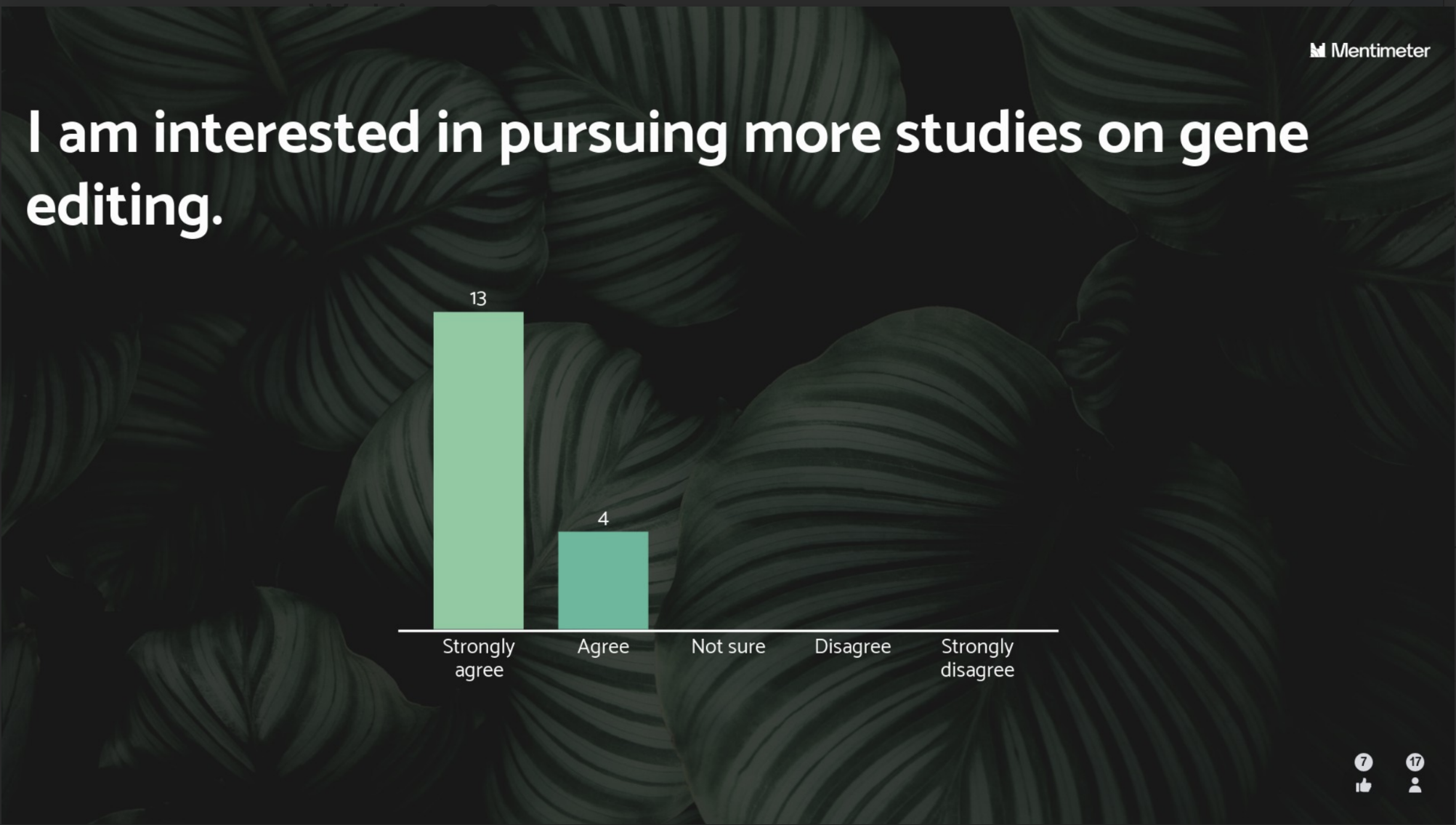Informing the Filipino Youth About Gene Editing Applications in Animals
| |
Gene editing has various applications in livestock and aquaculture industries in the Philippines. The benefits this technology offers should be shared with the public, especially the youth, to help with the country's development.
ISAAA Inc., in partnership with the Biotechnology Coalition of the Philippines, Inc. (BCP), organized a webinar to provide information about the current status of gene editing applications in livestock and aquaculture and its potential impacts in the Philippines. The webinar titled Gene Genies: Gene Editing by Filipino Scientists (Applications in Livestock and Aquaculture) also aimed to familiarize attendees with the available resources from ISAAA Inc. and other like-minded agencies. The webinar, held on February 26, 2024, via Zoom, had a total of 38 participants from 15 different schools and colleges in the Philippines. This article highlights the essential points that were discussed during the webinar.

Dr. Rhodora Romero-Aldemita, Executive Director of ISAAA Inc., welcomed the attendees and explained that the webinar is the second part of a series meant to engage the minds of budding scientists. “We hope that through this webinar, we can contribute to a science culture among our young participants and build confidence to pursue science careers,” Dr. Romero-Aldemita mentioned.
Gene Editing Applications in Livestock
Dr. Marvin Villanueva, Chief of the Livestock Biotechnology Center, started his presentation by sharing the impacts of climate change on food systems and the challenges faced by the livestock industry. Dr. Villanueva gave a short background on livestock biotechnology and explained how it can help address the mentioned issues.
Dr. Villanueva introduced gene editing and gave international examples of genetically modified and gene-edited animals in the pipeline. He talked about the applications and uses of GM/GE animals in gene therapy, test system development, and xenotransplantation.
Dr. Villanueva also discussed other biotech applications for livestock in the Philippines, such as the Low-cost Portable Molecular Diagnostic Platform, QuickCArE™, and Somatic Cell Nuclear Transfer. Dr. Villanueva concluded his presentation by emphasizing that “there are exciting opportunities for the use of modern biotechnology in addressing pressing problems of the livestock industry in the Philippines.”
Gene Editing Applications in Aquaculture
Dr. Rhoda Mae Simora, Associate Professor at the University of the Philippines Visayas, focused on the applications of gene editing in aquaculture. The discussion started with the definition of gene editing and the commonly used technologies such as CRISPR, ZFN, and TALENs.
Dr. Simora laid out various products of gene-edited fish across the globe, which include Atlantic Salmon, Nile Tilapia, Common Carp, Channel Catfish, Red Sea Bream, Rainbow trout, Tiger Pufferfish, and Olive Flounder. She presented facts and reports from various sources, such as the Food and Drug Administration (FDA), Food and Agriculture Organization (FAO), and World Health Organization (WHO), which emphasizes the safe consumption of gene-edited fish.
Dr. Simora ended her presentation with the impacts of gene editing technology on the aquaculture industry. According to her, “Gene editing can improve fish species with impacts for sustainable and efficient aquaculture.”
Youth’s Perceptions of Gene Editing
Prior to the discussions, the attendees were asked about a gene-edited animal that they were familiar with. The commonly answered gene-edited animal was tilapia, and other responses consisted of sheep, mouse, fish, and Glo Tetra. During the discussions, the experts clarified that gene editing is being used in animals such as fish, and rats, among others; however, GloFish Tetra is a product of genetic engineering.
After the discussions, the participants were asked if they viewed gene editing as beneficial to livestock and aquaculture. The results showed a favorable outlook of the attendees towards gene editing. The interest of the participants in pursuing studies in gene editing was also assessed at the end of the webinar. The survey shows that most of the participants are interested in pursuing studies and careers related to gene editing.


The attendees were also encouraged to participate in the open forum. One of the questions that arose during the open forum was, “Do gene editing and genetic modification mean the same thing?” Dr. Villanueva emphasized that these techniques are different. “When you say genetically modified, you insert a foreign gene from a different species. It is not naturally occurring,” Dr. Villanueva said. He explained that in gene editing, a researcher already has a targeted gene in a crop or animal that will be inserted or knocked out to exhibit a desired trait.
Similar to this, one of the attendees also sought to understand the inheritance of traits in gene-edited fish. Dr. Simora explained that the edited gene can be passed onto the next generation. In relation to this, a participant also asked if it is safe to release the gene-edited animals in the wild. Dr. Simora said that gene-edited fish are not allowed to be released in the wild as they are prone to predation. As much as possible, researchers place them in biological or genetic containments to secure them.
The webinar ended with a short message from Dr. Abraham Manalo, the Executive Secretary of BCP. If we look at the global perspective, Dr. Manalo emphasized that the Philippines is one of the countries around the world with science-based regulations. He said that the Philippines has a working, systematic, science-based, stringent, but streamlined regulatory process for modern biotechnology. “We have a very bright future on gene editing use in the Philippines,” Dr. Manalo said. He encouraged the attendees to pursue studies and careers in biotechnology, as it delivers positive impacts to the various facets of society.
Read more about the first webinar of the series here. For more information about gene editing, visit our resource page.
| Newer Post | Archive | Older Post |
Science Speaks is ISAAA Inc.'s official blog. Weekly blog articles, authored by ISAAA writers, partners, and invited contributors, aim to help share, disseminate, and promote scientific knowledge and its vital role in achieving global agricultural sustainability and development. Your support to Science Speaks will help us achieve this goal. You can help us by donating as little as $10.

